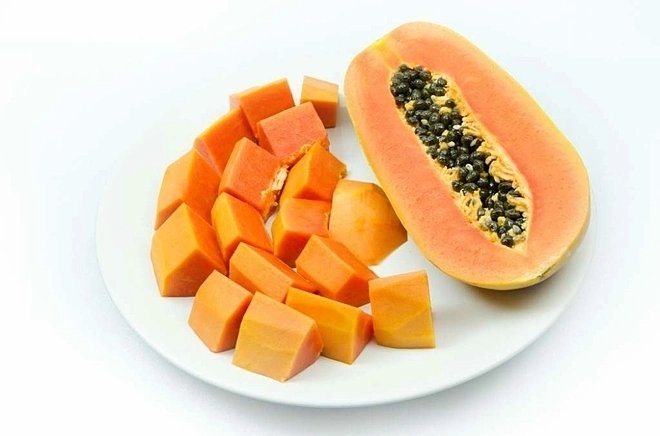Growing papaya at home in pots is a fantastic way to enjoy fresh, tropical fruit without needing a large garden. Papayas are fast-growing plants that can thrive in containers if given the right care. By following a few key steps, you can successfully cultivate a healthy papaya plant and enjoy a bountiful harvest. This guide will walk you through everything you need to know to grow papaya in pots, from selecting the right container to harvesting delicious fruit.
### **Selecting the Right Pot and Location**

Papaya plants have a deep root system and require adequate space to grow. Choosing the right pot and placement is crucial for their health and productivity.
– **Pot Size:** Select a large container, at least **15-20 gallons** in volume and **18-24 inches deep**, to accommodate the plant’s root system.
– **Drainage:** Ensure the pot has **several drainage holes** at the bottom to prevent waterlogging.
– **Location:** Papayas need **full sun exposure** to thrive. Place the pot in a location that receives at least **six hours of direct sunlight daily**.
– **Climate Considerations:** Papayas grow best in **warm temperatures between 70-90°F (21-32°C)**. If you live in a colder climate, consider keeping the plant indoors during winter.
### **Choosing the Right Papaya Variety**
Some papaya varieties grow too large for container gardening, so selecting the right type is essential.
– **Dwarf or miniature varieties** are ideal for growing in pots. Consider varieties such as:
– **‘T.R. Hovey’** – A dwarf hybrid that produces fruit early.
– **‘Solo’** – A compact variety known for its sweet and flavorful fruit.
– **‘Red Lady’** – A high-yielding variety that does well in containers.
### **Soil Preparation and Planting**

Papayas thrive in **well-draining, nutrient-rich soil**. Proper soil preparation ensures healthy growth and fruit production.
– **Soil Selection:** Use a **light, well-draining potting mix** with added compost or organic matter.
– **pH Levels:** The soil should have a pH of **5.5-7.0** for optimal growth.
– **Planting from Seeds:**
– Extract seeds from a ripe papaya, rinse them, and let them dry for a day.
– Sow the seeds **1 inch deep** in moist soil.
– Space multiple seeds **2-3 inches apart** if planting more than one.
– Water thoroughly after planting.
– **Planting from Seedlings:** If using store-bought seedlings, transplant them carefully into the pot, ensuring the roots are covered but not buried too deep.
### **Care and Maintenance**
Proper care is essential to keep papaya plants healthy and productive.
#### **Watering**
– Keep the soil **consistently moist** but avoid overwatering, which can lead to root rot.
– Water the plant **2-3 times per week**, increasing the frequency during hot weather.
– Ensure proper drainage to prevent standing water.
#### **Fertilizing**
– Papayas are **heavy feeders** and require regular fertilization.
– Use a **balanced, slow-release fertilizer** (such as 10-10-10) every **4-6 weeks** during the growing season.
– Supplement with **organic compost, banana peels, or fish emulsion** for added nutrients.
#### **Pruning**
– Remove **dead or yellowing leaves** to improve air circulation and reduce disease risk.
– Trim off **excess suckers** to encourage the main stem’s growth.
– If the plant grows too tall, trim the top to promote lateral growth and easier fruit access.
#### **Pollination**
Some papaya plants require pollination to produce fruit.
– **Self-pollinating varieties** (like ‘Solo’) do not need manual pollination.
– If growing **male and female plants separately**, hand-pollinate by transferring pollen from male flowers to female flowers using a small brush.
#### **Pest and Disease Control**

Papayas are susceptible to pests and diseases, but proper care minimizes risks.
– **Common Pests:**
– **Aphids:** Spray with a mixture of water and neem oil.
– **Spider mites:** Wash leaves with soapy water.
– **Whiteflies:** Use sticky traps to catch them.
– **Diseases:**
– **Powdery mildew:** Prevent by ensuring good air circulation and avoiding overhead watering.
– **Root rot:** Prevent by using well-draining soil and avoiding excessive watering.
– **Papaya ringspot virus:** Keep plants healthy and remove infected ones promptly.
### **Harvesting Your Papayas**
Patience is key when growing papayas, as they take several months to mature.
– Papaya trees start bearing fruit within **6-12 months** of planting.
– Harvest fruit when the **skin turns slightly yellow or orange** and yields to gentle pressure.
– Use a sharp knife to cut the fruit from the tree carefully.
– Store harvested papayas at **room temperature** until fully ripe.
– Enjoy fresh, blended into smoothies, or used in a variety of dishes.
### **Tips for a Successful Papaya Harvest**
1. **Choose the Right Pot Size:** A deep and wide pot supports strong root development.
2. **Provide Full Sunlight:** At least six hours of direct sunlight daily is essential for healthy growth.
3. **Water Regularly:** Keep the soil consistently moist but not soggy.
4. **Fertilize Often:** Papayas need plenty of nutrients to thrive.
5. **Protect from Pests and Diseases:** Monitor regularly and take action if needed.
6. **Prune Strategically:** Remove weak or dead growth to enhance air circulation and fruiting.
### **Conclusion**

Growing papaya in pots is a rewarding experience that allows you to enjoy fresh, tropical fruit at home. By selecting the right variety, providing proper care, and maintaining optimal growing conditions, you can achieve a bountiful harvest even in limited space. With patience and attention to detail, your potted papaya tree can thrive and produce delicious fruit for years to come.
